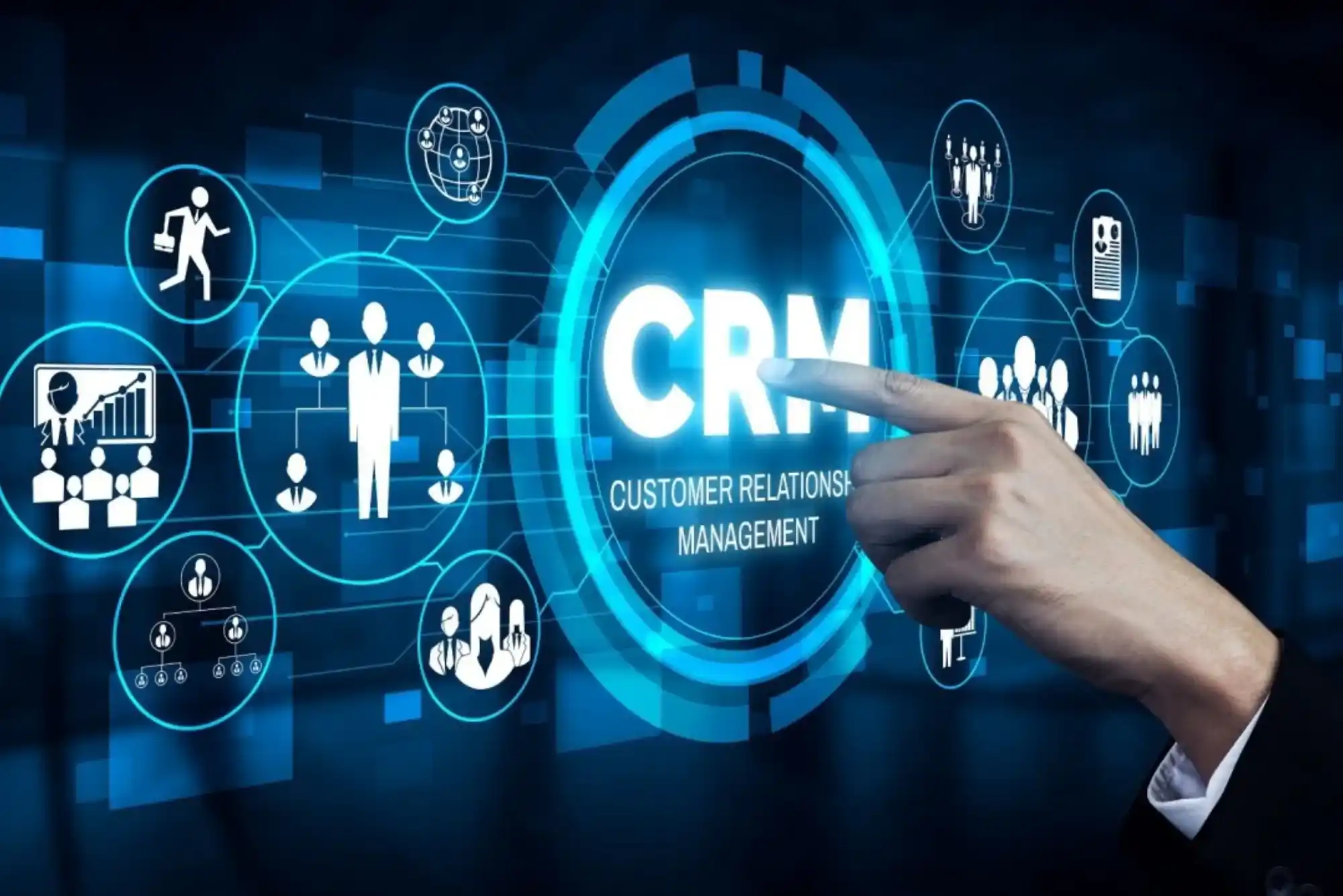In the world of fast-paced business operations, one of the most common and frustrating problems teams face is data confusion. Miscommunication, duplicate entries, outdated customer information, and uncoordinated schedules can lead to costly mistakes and lost opportunities. As someone who has worked in both small startups and large enterprises, I’ve seen firsthand how chaotic it can get when data is scattered across different systems or spreadsheets. The solution? A well-implemented CRM system.
Customer Relationship Management (CRM) software is more than just a digital Rolodex. It’s a strategic tool that can streamline business operations, minimize confusion, and help teams stay on the same page. When integrated with CRM and scheduling software, it becomes a powerhouse of clarity, structure, and efficiency.
Let’s explore how CRMs actually reduce data confusion—and why every business, regardless of size, should consider using one.
Centralized Information Means One Source of Truth
Before CRMs became mainstream, customer data was often spread across different tools—email platforms, Excel sheets, sticky notes, and even paper files. This fragmentation meant that different team members could be working off different versions of the same customer’s information. One might have the correct email, another the updated phone number, and someone else might not even know the customer exists.
A CRM centralizes all customer data into a single location. Everyone on the team can access the same contact information, communication history, deal status, and more. This eliminates the need to guess or double-check across multiple systems. It’s especially beneficial when a team member is on leave or a new employee joins—they can get up to speed with just a few clicks.
Eliminating Duplicates and Conflicting Entries
Data duplication is a hidden monster. When you have multiple versions of a customer profile floating around, it’s easy to send conflicting emails or accidentally assign multiple reps to the same lead. This not only frustrates customers but also erodes trust in your team’s professionalism.
CRMs often come equipped with intelligent duplicate detection. They can flag when a new contact or lead already exists in the system and prompt the user to update the existing profile instead of creating a new one. Some CRMs even allow automated merging of records with similar data, further reducing confusion.
With CRM and scheduling software combined, the system also ensures no overlapping appointments or follow-ups are scheduled for the same client across different reps, helping avoid embarrassment and missed opportunities.
Real-Time Updates Improve Collaboration
One of the most powerful features of modern CRMs is real-time syncing. When a sales rep updates a client’s contact details or logs a meeting, everyone else on the team sees it instantly. This live data environment supports better collaboration.
Consider a scenario where a customer calls your support team and mentions a recent sales pitch. Without a CRM, the support team might have no idea what the customer is referring to. But with real-time notes and activity logs in a CRM, they can quickly catch up, understand the context, and respond appropriately. This kind of seamless communication makes teams more agile and responsive.
Integrated Scheduling Prevents Chaos
Integrating scheduling features into your CRM is a game-changer. Most businesses still use standalone calendar tools, which work fine—until they don’t. Double-bookings, missed meetings, or unclear responsibilities become more common as your client base grows.
A CRM that includes built-in scheduling software simplifies time management. You can set appointments, follow-ups, reminders, and automated notifications—all in one place. If a sales manager schedules a demo, the system can automatically block off the rep’s calendar, send an email reminder to the client, and log the activity under the right contact.
This also helps managers and team leaders monitor workloads, availability, and deadlines more accurately. When all tasks and meetings are logged into the CRM, there’s less chance of things slipping through the cracks.
Reducing Miscommunication Across Departments
In most organizations, the sales, support, and marketing teams often operate in silos. This siloed approach leads to miscommunication, especially when handling customer relationships. For example, a marketing team might send a discount offer to a customer who already renewed at full price—or a support agent may not know a VIP client is having a critical issue.
CRMs bridge these gaps by offering full visibility into a customer’s journey. When all departments can see the same timeline of interactions, notes, and updates, it becomes much easier to collaborate. This transparency minimizes confusion and ensures everyone is working with the same knowledge base.
Customized Fields and Filters Help Focus on What Matters
Another overlooked benefit of CRMs is customization. Businesses have different needs, and not every piece of data is relevant for every team member. With CRM systems, you can create custom fields, tags, pipelines, and filters so that users only see what’s most relevant to them.
For instance, a customer support agent might need access to issue history and satisfaction scores, while a marketing manager might care more about email engagement and lead source. Personalized dashboards reduce information overload and allow each team to focus on their priorities without getting lost in irrelevant details.
This level of filtering and organization significantly cuts down on the time spent searching for data—and keeps everyone on task.
Automations Reduce Manual Errors
When humans are responsible for every data entry, the risk of error is high. Typos, missed deadlines, forgotten follow-ups—these are not just nuisances but also business risks. CRMs offer powerful automation capabilities that reduce manual touchpoints.
Automations can range from simple tasks like sending a follow-up email after a meeting to complex workflows that move leads through a sales pipeline based on triggers. By automating repetitive tasks, CRMs reduce the chances of forgetting something important and ensure a more consistent customer experience.
When paired with CRM and scheduling software, this automation can also manage appointment confirmations, reminders, rescheduling workflows, and more—freeing up valuable time for your team.
Reports and Analytics Drive Smarter Decisions
A major contributor to data confusion is not knowing what the data actually means. You may have thousands of contact entries, but what’s the conversion rate? Which sales rep is closing the most deals? What type of clients churn the most?
CRMs solve this by offering robust reporting tools. You can analyze performance trends, customer behavior, and team productivity all in one dashboard. Clear data leads to better decisions. Instead of relying on hunches or scattered spreadsheets, leaders can make strategic choices based on actual insights.
CRM platforms often let you customize these reports so they match your goals—whether that’s revenue tracking, call volume, or campaign engagement.
Real-World Use Case: A Small Business Success Story
Let me give you an example from my own consulting experience. I worked with a boutique marketing agency that relied heavily on Google Sheets and email to manage leads. Their sales team often reached out to the same lead multiple times, unaware someone else already had contact. Meetings were double-booked, and follow-ups fell through the cracks. It was a mess.
We implemented a CRM with integrated scheduling software. Within a week, the chaos began to clear. Sales reps had visibility into who was contacting whom. Meetings were scheduled properly, clients received reminders, and no lead was ever contacted twice unnecessarily. By the end of the quarter, their conversion rate improved by 18%, and customer satisfaction increased significantly.
The team didn’t work harder—they worked smarter.
Final Thoughts: Less Confusion, More Clarity
Data confusion is one of those silent killers in any growing business. It creeps in slowly—one duplicate entry at a time—until you realize your team is spending more time fixing mistakes than making progress.
CRMs offer a scalable, intuitive, and effective way to manage customer relationships and reduce confusion. When enhanced with CRM and scheduling software, these platforms bring order to chaos, giving your team the tools to work together, stay organized, and grow faster.
If you’ve ever felt like your business is drowning in scattered information and missed opportunities, it’s time to consider a CRM. Not just for the sake of convenience—but for the health of your business.




